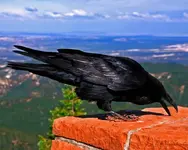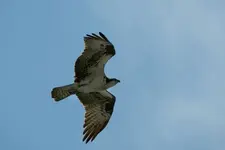Another simple thing in life convoluted by governemt regulation!
It is legal - but--- it's illegal...
It is legal to sell certain duck feathers for fly tying if legally taken with all the right tags and a dozen rules followed correctly... It is illegal to dust a red tail hawk to make a hat band! (BTW- 85% of all birds in the US are covered under the Migratory Acts...)
Two pieces of info below to help you figure it out:
50 CFR 20: SUBPART J -- FEATHERS OR SKINS
§ 20.91 Commercial use of feathers.
Any person may possess, purchase, sell, barter, or transport for the making of fishing flies, bed pillows, and mattresses, and for similar commercial uses the feathers of migratory waterfowl (ducks, geese, brant, and swans) killed by hunting pursuant to this part, or seized and condemned by Federal or State game authorities, except that: (a) No person shall purchase, sell, barter, or offer to purchase, sell, or barter for millinery or ornamental use the feathers of migratory game birds taken under authority of this part; and (b) No person shall purchase, sell, barter, or offer to purchase, sell, or barter mounted specimens of migratory game birds taken under authority of this part.
-----------------------------------
http://www.npwrc.usgs.gov/about/faqs/birds/feathers.htm
Possession of Migratory Birds, Including Feathers, Nests, and Eggs
A type of question that we commonly get involves well meaning people who want to rescue young or injured birds, secure feathers for artwork, or salvage eggs or nests for various purposes.
Anyone desiring to possess migratory birds or their parts or products should be aware that all of these are covered under the Migratory Bird Treaty Act (16U.S.C. 703-712), which implements a series of international treaties designed to protect migratory birds.
Some key provisions of the Act are worth keeping in mind:
•Wording of the Act makes it very clear that most actions that result in "taking" or possession of a protected species or its parts or products is a violation of the Act. Specifically, the Act states:
"Unless and except as permitted by regulations, …it shall be unlawful at any time, by any means, or in any manner…to pursue, hunt, take, capture, kill, …possess, offer for sale, sell, …purchase, import…any migratory bird, any part, nest, or eggs of any such bird…"
•It is a "strict-liability" law, meaning that there is no requirement for law enforcement agencies to prove "intent" to violate the law. That is, if you are found in possession of a protected species or its parts or products, you are automatically in violation of the law.
•The provisions of the Act are nearly absolute; "...except as permitted by regulations ..." is the only exception. Some examples of permitted activities that do not violate the law are legal hunting of specific game birds, legitimate research activities, display in licensed zoological gardens, and bird banding under an appropriate permit.
•The Act covers the great majority (83%) of all native birds found in the U.S. Many of the species not covered by the Act are covered by the Endangered Species Act , other Federal laws, or state laws, many of which are as stringent as the Migratory Bird Treaty Act . In the lower 48 states, all species except the house sparrow, feral pigeon, common starling, and non-migratory game birds like pheasants, gray partridge, and sage grouse, are protected.
•Penalties upon conviction can be severe. Even if a sympathetic jury finds that you meant no harm in trying to rear an abandoned nestling or in picking a hawk feather, legal defense costs are clearly not worth the risk.
In summary: your best approach is to take a hands off approach...look but don't collect. If you find an injured bird or abandoned nestling, call the local game warden before you pick it up. (If this seems cruel, take a minute and read the FAQ entitled "How do I care for an abandoned nestling?")
Most of the above information is taken almost verbatim from a short paper entitled Birders And U.S. Federal Law, by Craig Faanes, Cleveland Vaughn Jr., and Jonathan Andrew. In addition to material covered above, their paper contains a thought-provoking discussion of other types of behavior by bird lovers that can run afoul of federal law, and is worth taking a few minutes to read.
In addition, the U.S. Fish and Wildlife Service's Migratory Bird Management Office offers A Guide to the Laws and Treaties of the United States for Protecting Migratory Birds.








 Here is an Osprey we photographed Sunday. There were many of its feathers under the nest but the female is on eggs right now. So I am not allowed to pick up a fallen feather? That is kinda ridiculous.
Here is an Osprey we photographed Sunday. There were many of its feathers under the nest but the female is on eggs right now. So I am not allowed to pick up a fallen feather? That is kinda ridiculous.

